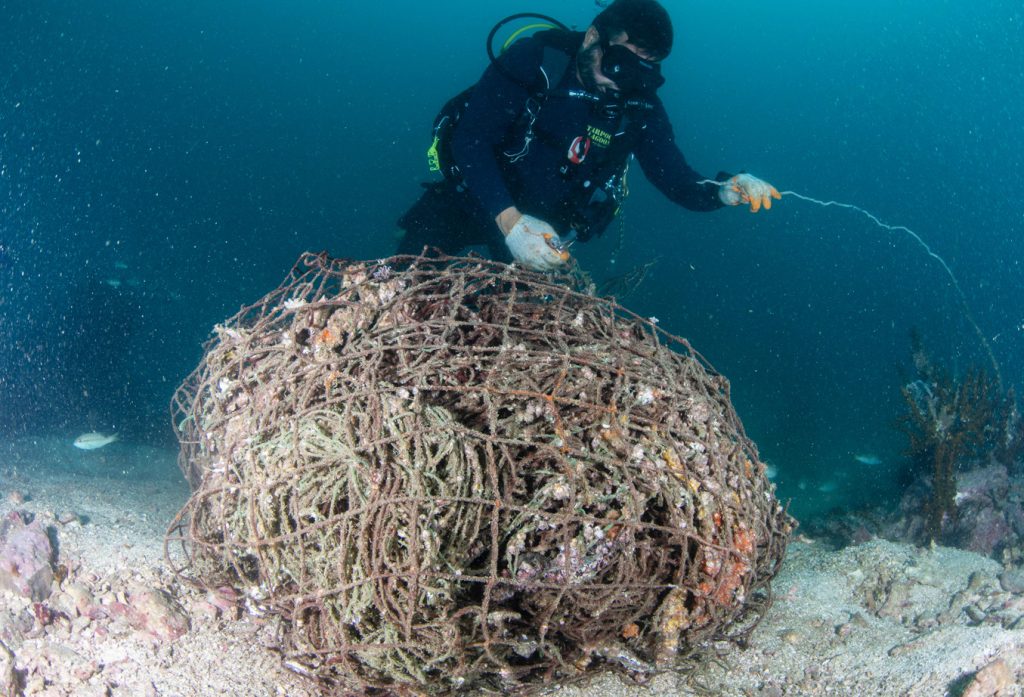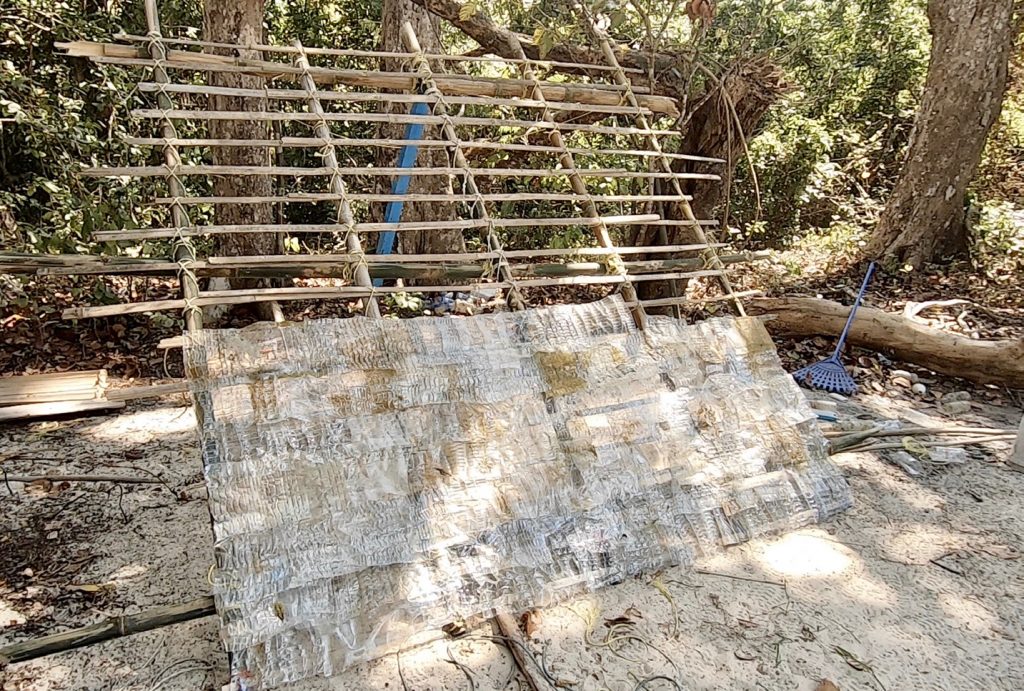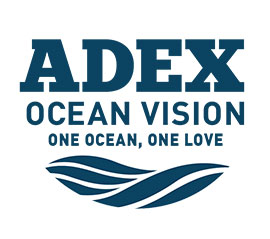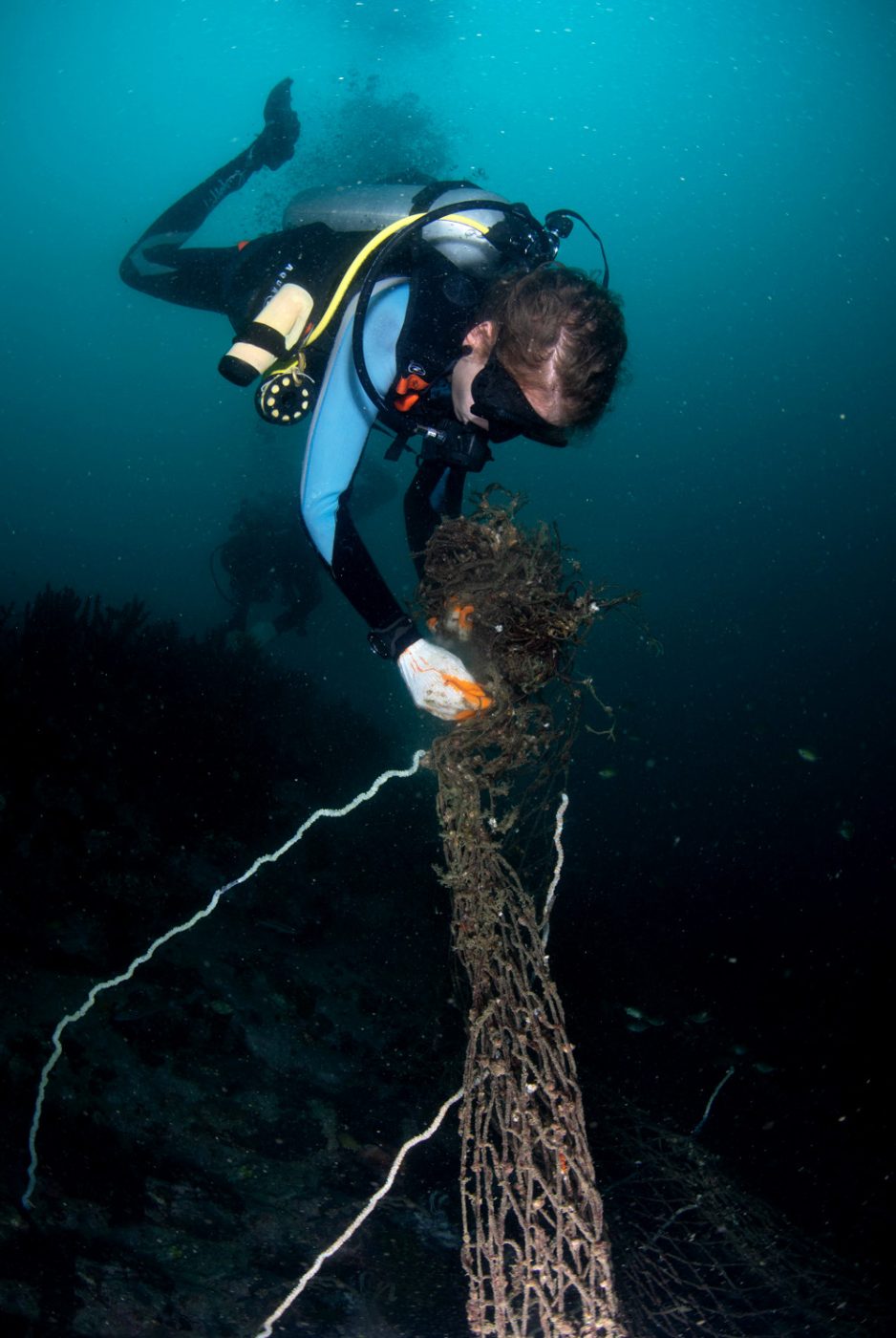Article extracted from Asian Diver Issue 02/2020 (155) Text by: Anuar Abdullah, Images by: Anuar Abdullah, Magnus Larsson
ABOVE: A scuba diver attempts to remove a huge ghost fishing net tangled over a large area of coral reef (IMAGE: Magnus Larsson)
The Mergui Archipelago in Myanmar is regarded as one of the last frontiers of diving in Southeast Asia. Untouched by mass tourism, its lush rain forests and dense mangroves are found in every corner of the archipelago. Its beaches are postcard perfect. There are 800 islands in the Mergui, most are located off the coast of Myeik. The key attraction for divers in this location is the Burma Banks, which is found on the outer reaches of the Mergui in the Andaman Sea. At Burma Banks is where the ocean trench begins to drop down into the abyssal plains. The continental shelf is beyond our reach for assessment. Large pelagic, sharks, and rays are common in the waters. The islands closer to the coasts consists of the shallow plateau and scattered reefs. There, the coral reefs are littered with discarded or lost fishing gear. There is hardly any reef in this vast archipelago that has not been damaged by ghost nets. Some reefs are still covered in fishing nets as thick as up to 12 layers that have accumulated over the years. Besides the ghost nets, there is no shortage of other abandoned fishing gear like traps and long lines. Conservation of coral reefs in this area begins with a massive cleanup. Hardly any rehabilitation of reefs in the Mergui can begin without clearing the sites, assessing the damage and protecting them from future encroachment. It’s a task that is nearly impossible to accomplish.
Ghost net cleanups also come with their own challenges. When tonnes of nets are removed from the reefs, they need somewhere to go. The protocol of ghost net removal extends beyond just diving and collecting. Prior to retrieval, there are procedures that must be written and followed by everyone. Safety is one of aspect, but there are other post retrieval activities that need to be done when the heavy, smelly net arrives onshore. Sorting and documenting the nets is a daunting task on its own. Lead and sinkers are removed from all nets prior to disposal. The lead toxicity can affect people and the environment if not disposed of properly. Then the net is separated by its mesh size and materials before it is weighed and documented. In the Mergui, the team upcycled the lead by melting it and making diving weights Some of the nets are washed and sun-dried to be used later as shade for the organic farms.
 TACKLING THE PLASTIC PROBLEM ON REMOTE ISLANDS
TACKLING THE PLASTIC PROBLEM ON REMOTE ISLANDS
Plastic pollution globally is an environmental pandemic that must be overcome by harnessing realistic solutions. To many of us, it seems that recycling is a practical approach.

However, in many situations, recycling concepts aren’t working. It is simply not practical to collect and recycle plastic as production is cheaper than recycling it. Plastic pollutants can be found on every island in the Mergui and in immense aggregations. They are brought in by the winds and tides and deposited into the shores, mangroves, lowland forests, and streams. Every environment in the Mergui is littered. There is an effort to collect the plastic, but there is nowhere that it can be sent to. The distance to the nearest recycling facility is too great and it is simply not feasible. So if recycling is not the answer, what is? One of the immediate approaches is upcycling plastic waste into permanent materials. Pet bottles are compressed and shaped into roofing tiles for building. Upcycling is more feasible, as the plastic does not leave the island; instead, it is used in different forms and for different purposes.

Storage sheds, field research camps, shelters, and accommodations can be built using plastic debris. And they are free. The upcycling campaign will soon challenge the creativity of local communities to create useful structures from material that is abundant and free. Plastic roofs outlast thatched roofs and they are free. If saving money is the idea behind this concept, it may work for most island communities, especially those with lower income groups. Soon, and with the help of engineers, portable extrusion machines will be introduced to shred and extrude plastic materials into building materials such as square bars and blocks. These materials can be used to build schools on remote islands.


